Abstract
The main purpose of this gel formulation of Guava leaves, Neem leaves, Mango leaves, Jasmine leaves, Jamun leaves was to relieve pain and discomfort due to oral ulcers. As we know there are different types of sores in the mouth that cause inflammation and pain. The most common oral ulcers are Local trauma & Aphthous Stomatitis. Now many over-the-counter medications are essential to staying in primary health care because of the positive response and the most effective treatment with the least amount of side effects. Herbal medicines are still the backbone of almost 75-80% of the world's population, especially in developing countries, in primary health care due to better adherence to the human body, cultural acceptance and less side effects
Keywords
Local trauma, Aphthous stomatitis, Oral ulceration.
Introduction
Mouth ulcers are painful sores that can occur anywhere inside the mouth. This leaflet is aboutthe most common type of mouth ulcers, which are aphthous mouth ulcers. At least 1 in 5 people can develop aphthous mouth ulcers at some stage in their lives. Women are affected more often than men.1 An oral ulcer (also called a mouth ulcer or mucosal ulcer) is an ulcer that occurs in the mucous membranes of the mouth. They are painful round or oval ulcers that form in the mouth, especially Lyon inside the cheeks or lips. Mouth sores, also known as aphthous sores, can be painful when we eat, drink or brush our teeth. Common causes of mouth sores include a lack of nutrients like iron, vitamins especially B12 and C, poor oral hygiene, disease, depression, indigestion, mechanical damage, food intolerance, hormonal imbalance, skin disease etc. A mouth ulcer is a fracture or fracture of the mucous membrane, located in the middle of the mouth. It is usually yellow or white and usually looks like pressure on the mouth which is a mucous membrane.2

Figure no.:-01 Mouth ulcer.
Mouth ulcers are yellowish or white depression with red margination in the mucus lining of the mouth cavity, characterized by inflammation and pain. Synthetic and semi-synthetic medicaments are suggested to treat mouth ulcers like antibiotics and antiseptics, local anesthetics, local analgesics, steroidal and non-steroidal anti-inflammatory drugs. Topical steroids are the most frequently used treatments but they have some serious adverse effects on the continuous application like adrenal insufficiency, immunosuppression, osteoporosis, hyperglycemia, gastrointestinal disturbance, etc.3 Mouth ulcer is also known as canker sore –painful lesions that develop in mouth at base of your gum. They can cause problem during eating drinking and talking uncomfortable. Treatment of mouth ulcer may include antiseptic mouthwash, such as chlorhexidin mouthwash or povidone iodine mouthwash or use antibiotic or analgesic gel formulation semi-solid formulation include gel having a liquid phase which are than thickened by other components.4 A mouth ulcer (also termed an oral ulcer, or a mucosal ulcer) is an ulcer that occurs on the mucous membrane of the oral cavity . They are painful round or oval sores that form in the mouth, mainly on the inside of the cheeks or lips. Mouth ulcers are very common, and they occur in association with many diseases and by different mechanisms, but usually there is no serious underlying cause . Common causes of mouth ulcers include nutritional deficiencies such as iron, vitamins especially B12 and C, poor oral hygiene, infections, stress, indigestion, mechanical injury, food allergies, hormonal imbalance, skin disease etc. Mouth ulcers, also known as aphthous ulcers, can be painful while eating, drinking or brushing teeth.5
TYPES OF MOUTH ULCER:
On the basis of ulcer size and number, mouth ulcer can be classified as minor, major.
- MINOR ULCERS:
These are around 2-8mm in diameter and they usually clear up in 10 days to 2 weeks.
- MAJOR ULCERS:
These are bigger and deeper, often with a raised or irregular border. This type of ulcer can take several weeks to heal and may leave a scar in the mouth .6
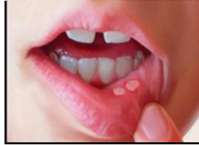
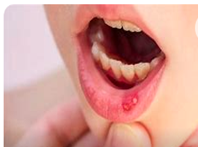
Figure no.:-02 Mouth ulcer
CAUSES OF MOUTH ULCER:-
The cause is not known. They are not infectious and you cannot 'catch' aphthous mouth ulcers. In most cases, the ulcers develop for no apparent reason in people who are healthy. In some cases the ulcers are related to other factors or diseases.7
Some Medicinal Plants Having Anti-Ulcer Activity:
- JASMINE:
Jasmine is one of the leading traditional flower crop in India. The annual production is worth more than 120 million.In India, Tamil Nadu is the leading producer of jasmine with an annual production of 77,247 tonnes cultivated from 9,360 ha .Among 200 species of Jasminum genus, the species Jasminum sambac L. is an evergreen shrub and native habitat of humid tropical climate. It harbors many insects, since most of the insects are indulged with terrestrial ecosystems. Insects are crucial component of an ecosystem, as they perform many functions like aerating soil, pollinating flowers, pests, predators and parasitoids .8
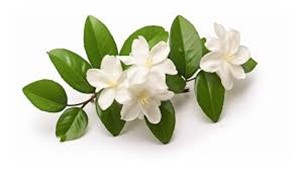
Figure No.:-03 Jasmine plant
Indian Jasmine: -
It Is Also Known As Chameli In India.
Family:-
Oleaceae
Botonical name:-
Jasminum
Kingdom:
Plantae
Order:-
Oleales
Chemical Constituents:-
- Benzyl Alcohol
- Benzyl Acetate
- Linolool
- Indol
- Benzyl Benzoate
- Cis Jasmine
- Geroniol
- Methyl Antrolinate
Mechanism Of Action: -
Due to the anti-inflammatory, antibacterial activity the jasmine applied on ulcer so decrease the ulcer so automatically decrease the pain due to the ulcer.
Uses-
- It give anti- inflammatory action so it is used to decrease the inflammation due to the ulcer.
- It is used to decrease pain due the presence of ulcer in mouth and also used in the treatment of cancer as a pain removal.
- It is used to healing of canker in mouth.
- It is also used in treat constipation so automatically treat mouth ulcer.9
- NEEM:
Neem (Azadirachta indica) has universally been accepted as a wonder tree because of its diverse utility since from the Vedic times and in Ayurveda medicine it has been used for more than 4,000 years due to its medicine properties. So, it has been called by a variety of names like “the village of pharmacy,” “Drug Cabinet of Mother Nature”, ‘arista’ (means a ‘perfect, complete and imperishable’) besides its therapeutic efficacious, Neem has already established its potential as a source of naturally occurring insecticide and pesticide. The stems, roots, leaf and young fruits of the tree are made into capsules, tablets, lotions, creams, soaps, and shampoos, and are used to treat a variety of conditions. The drug interaction of the herb has not been documented scientifically, although Drugs.com states that more than 0.2 ml of neem oil per kilogram of body weight can lead to toxic reactions. The present review highlights a literature on taxonomy, origin and extraction of neem.10
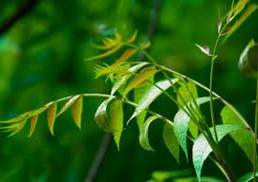
Figure No.:-04 Neem Plant.
Family:-
Meliaceae
Botonical Name:-
Azadirachta Indica
Kingdom:
Plantae
Chemical constituents:-
- Protein (7.1%),
- Carbohydrates (22.9%)
- Minerals,
- Calcium
- Phosphorus
- Vitamin C
- Carotene
Mechanism Of Action: -
Neem (Azadirachta indica) plants parts shows antimicrobial role through inhibitory effect on microbial growth/potentiality of cell wall breakdown.
Uses-
- Boosts immunity and provides antioxidants
- Promotes brain and liver health
- Manages diabetes and balances Pitta and Kapha doshas
- Prevents and treats infections, especially skin and gum infections
- Purifies blood and detoxifies the body. 11
- MANGO:-
(Mangifera indica L.), belongs to the family of Anacardiaceae, and is frequently found in tropical and sub-tropical regions. It is one of the best popular comestible fruits in the world. The chemical composition of this plant has been studied widely in the past and was reported that the extracts contain different chemical family such as triterpenes, phytosterols, flavonoids and polyphenols . Mangiferin is a significant bioactive constituent of mango containing xanthone-C-glycoside, which has many pharmacological properties and is very important as phytochemical. It has antioxidant, immunomodulatory, antidiabetic, antitumour properties and is convenient in the treatment of asthma and inflammation .Some reports show the development of method for determination of mangiferin using a thin layer chromatography (TLC) and a high performance thin layer chromatographic (HPTLC) However, Liquid Chromatography (LC) method has not been reported before for the quantitative determination of mangiferin in extracts obtained from Mangifera indica L. leaves. Only a few reports on LC simultaneous determination of several components including mangiferin in Chinese traditional pharmaceutical preparations and recently report measuring the amount of mangiferin permissible into the eye .12
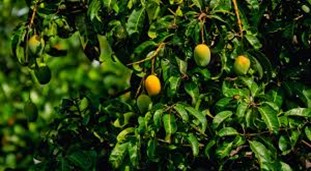
Figure No.:-05 Mango Plant
Family:-
Anacardiaceae
Botonicalname:-
Mangifera Indica
Kingdom:
Plantae
Chemical constituents:-
- Structural carbohydrates such as pectins and cellulose.
- Macronutrients such as carbohydrates, proteins, amino acids, lipids, fatty, and organic acids.
- Micronutrients such as vitamins and minerals.
- Phytochemicals such as phenolic, polyphenol, pigments, and volatile constituents.
- Major amino acids such as lysine, leucine, cysteine, valine, arginine, phenylalanine, and methionine.
Mechanism Of Action: -
may involve extract stimulation of pancreatic beta-cell function or hypoglycemic activity via an extra-pancreatic mechanism.
Uses-
- Preparing jam, jelly, ice cream, pickles, and chutney
- Blending with milk as "mango milkshake"
- Eating the skin or peel as a source of pectin and digestive aid
- Providing vitamin C, iron, folate, zinc, and vitamin B6 to boost immunity, prevent anemia, and improve digestion
- Supporting eye health with its rich yellow color from beta-carotene.13
- JAMBOLANA:
jambolana leaf extract showed hypoglycemic action in diabetic rats. The seed powder of E. jambolana is reported to have hypoglycemic action in streptozotocindiabetic rats . Its effect may be persistent, as in one study, homeostasis was maintained in the rats for two weeks after the cessation of treatment . In alloxan-diabetic rabbits the water extract of E. jambolana fruit pulp was more effective than the ethanol extract at reducing fasting blood glucose and improving blood glucose levels in the glucose tolerance test The jambolan has received far more recognition in folk medicine and in the pharmaceutical trade than in any other field. Medicinally, the fruit is stated to be astringent, stomachic, carminative, antiscorbutic and diuretic . Additionally, a fruit extract showed antimicrobial and cytotoxic activities and may potentially be used on topical antimicrobial products. In comparison to other nontraditional fruits jambolao showed considerable high antioxidant activity, which can constituent such as anthocyanins, tannins and flavonols [.The anthocyanin composition was characterised by the presence of 3,5- diglucosides of five out of six aglycones commonly found in foods.14
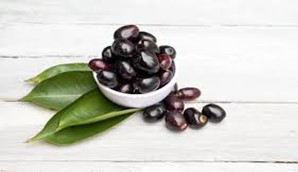
Figure No.:-06 Jamun plant.
Family:-
Myrtaceae
Botonicalname:-
Syzygium cumini
Chemical Constituents:-
- Anthocyanins
- Glucoside
- Ellagic Acid
- Isoquercetin
- Kaemferol
Mechanism Of Action:-
in lowering the blood sugar and cholesterol level is not known. The jamun may have employed several putative mechanisms to bring out its effects . The diabetes is triggered by induction of free radicals.
Uses-
- It has anti-bacterial and anti-fungal properties that fight germs and infections and heal wounds.
- It has bio-active properties that reduce fatigue and weakness and boost energy.
- It is beneficial for treating diabetes, especially the pulp and the seeds of the fruit.
- It is useful for treating digestive disorders such as diarrhea, dysentery, and dyspepsia. Jamun juice can be mixed with salt or curd for better results.15
- PSIDIUM GUAJAVA:
Psidium guajava L. (guava) grows predominantly in various countries with in tropical and subtropical regions. Guava has several medicinal properties and is well known for treating dysentery, vertigo, skin problems, jaundice, cerebral ailments, diabetes etc. It is rich in phenolics, favonoids, triterpenoids, tannins, vitamins, essential oils and sesquiterpene alcohols.Guava leaves mainly constitute rutin, naringenin, gallic acid, catechin, epicatechin, kaempferol, isofavonoids, and favonoids such as quercetin and guaijaverin that are well known for their antimicrobial, antioxidant and anti-infammatory actions. Due to the copious benefts, guava is cultivated worldwide where, India stands in the frst position with the production of 40,54,000 million tons (MT) from 2,65,000 hectares (ha) in the year 2017–18.16

Figure No.:-07 Psidium Guajava plant.
Family:-
Myrtaceae
Botonicalname:-
Psidium Guajava
Kingdom:
Plantae
Chemical constituents:-
- Saponins,
- Glycosides
- Flavonoids
- Tannins
- Low Alkaloids
- Phenols
- Steroids
Mechanism Of Action:-
In controlling infectious diarrhoea and compare it with quercetin, one of the most reported active .
Uses-
- Immunity Booster
- Lowers Risk Of Cancer
- Diabetes-Friendly
- Heart Healthy
- Treats Constipation.17
CONCLUSION:
This review provide the information of treatment of ulcer by different herbal medicinal plant and give information of its family, kingdom, chemical constituents, uses etc .According to old study, the mouth ulcer is mainly coursed by acid secretion and the main aim of this article to decrease the acid secretion so automatically decrease the ulcer. This review gives clear information that the natural accruing constituents of herbs are definitely able to resolve oral ulcer. This review also provides, this herb has introduced a good protocol for treatment of various mouth ulcers. In present days the demand of herbal formulation in the market due to their cost effective and less side effect and the above experimental data, it is clear that the gel formulation with herbal ingredients such as Guava leaves, Neem leaves, Mango leaves, jasmine leaves , jamun leaves has good characteristic, viscosity and also possesses a good antimicrobial activity, anti-inflammatory, antiulcer activity which is necessary in the management of mouth ulcer.
REFERENCES:
- Ajay S. Dongarwar, Dinesh P. Borkar and etal. Formulation and Evaluation of Herbal Aqueous Gelfor Mouith Ulcer. European Journal of Pharmaceutical and Medical Research, 2022:9(7), 256-262.
- Miss. Harshada B. Tribhuvan , Miss. Sapana S. Mhaske and etal. Formulation and Evaluation of Pharmaceutical Aqueous Gel for Mouth Ulcer Treatment: International Journal of Scientific Research in Science and Technology,2022:9(4),34-40.
- Nem Kumar Jain , Rituparna Roy and etal. Formulation and Evaluation of Polyherbal Aqueous Gel from Psidium guajava, Piper betel and Glycerrhiza glabra Extract for Mouth Ulcer Treatment: Research Journal of Pharmacognosy and Phytochemistry,2020:12(3),191-8.
- Ms. Vani Madaan, Ms. T. Manjula and etal. Herbal Mouth Ulcer Gel: A Review : Journal of Fundamental & Comparative Research,2022:8(26),
- Shubham Mittal ,Ujjwal Nautiyal and etal. A Review : Herbal Remedies Used For The Treatment of Mouth Ulcer: International Journal of Health and Clinical Research, 2019;2(1):17-23
- Miss. Harshada B. Tribhuvan , Miss. Sapana S. Mhaske and etal. Formulation and Evaluation of Pharmaceutical Aqueous Gel for Mouth Ulcer Treatment: International Journal of Scientific Research in Science and Technology, 2022:9(4),34-40.
- Ajay S. Dongarwar, Dinesh P. Borkar, and etal. Formulation And Evaluation Of Herbal Aqueous Gelfor Mouith Ulcer: European Journal Of Pharmaceutical And Medical Research, 2022,9(7), 256-262.
- U. Pirithiraj , R.P. Soundararajan and etal. Studies on insect diversity in jasmine (Jasminum sambac L.) ecosystem: Journal of Environmental Biology, 2021,42, 1470-1477.
- Yuvraj Saini, Akshay Kumar Sharma and etal. Herbal Mouth Ulcer Gel: A Review: Journal of Fundamental & Comparative Research, 2022,8,(26), 2277-7067.
- Arulkumar R , Karthika S and etal. Neem (Azadirachta Indica): A Miraculous Medicinal Plant From India: International Journal Of Universal Pharmacy And Bio Sciences, 2019,8,(4), 2319-8141.
- Googal
- Suslebys Salomon , Iliana Sevilla, And etal. Extraction Of Mangiferin From Mangifera Indica L. Leaves Using Microwaveassisted Technique: Regular Article, 2014. 26 (7): 616-622.
- Googal
- Shrikant Baslingappa Swami , Nayan Singh J. Thakor, and etal. Jamun (Syzygium cumini (L.)): A Review of Its Food and Medicinal Uses: Food and Nutrition Sciences, 2012, 3, 1100-1117.
- Googal
- N. S. Sampath Kumar , Norizah Mhd Sarbon, and etal. Extraction Of Bioactive Compounds From Psidium Guajava Leaves And Its Utilization In Preparation Of Jellie: Original Article, (2021) 11:36.
- Googal


 Somesh omprakash Kale *
Somesh omprakash Kale *
 Ashvini Babanrao Deshmukh
Ashvini Babanrao Deshmukh







 10.5281/zenodo.11127319
10.5281/zenodo.11127319